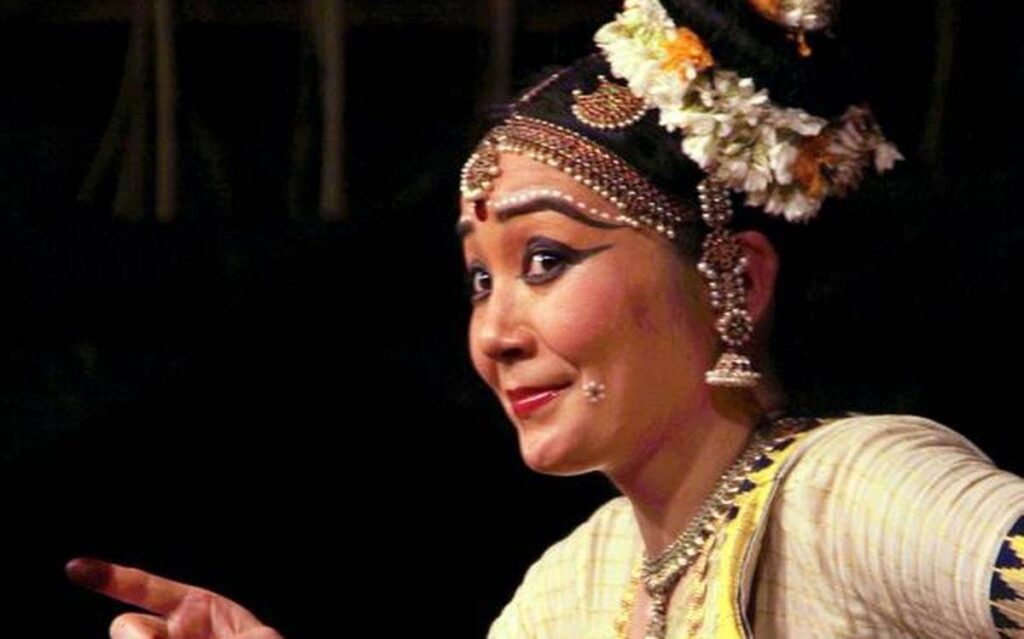How the establishment of kalaris and cultural exchange programmes across south India led to Mohiniyattam taking different forms rooted in local ethos.
n our earlier articles, we have described the extent to which Swathi Thirunal patronized music and dance, especially Mohiniyattam. In fact, artists who heard of his fame used to come to Travancore palace in large numbers from all over India and receive gifts from him. Unfortunately, Mohiniyattam did not develop much in Travancore after Swathi Thirunal’s reign.
Several Kaḷaris or training centres for Dasiyattam training were established in the Vijayanagara Kingdom in the present Andhra Pradesh, Tanjavore in Tamil Nadu and Thiruvananthapuram in Kerala during Swathi Thirunal’s reign. Artists from these Kaḷaris interacted with each other constantly and the female dancers and the Naṭṭuvans (accompanying percussionist in Bharatanatyam or any classical dance art form) often used to go to other Kaḷaris for training as well as for performance.
The political rule often changed hands, and the styles of dancing also got variously influenced due to this. Telugu, Tamil, Marathi, Kannada, Sanskrit, Hindi and Malayalam works were commonly used in the dasiyattam compositions. Even though the styles were different, due to the constant and abundant cultural exchange that occurred during this period, certain similarities started evolving in traditional Devadasi dance forms, more specifically in Mohiniyattam and Bharatanatyam.
Deterioration of Mohiniyattam
After Swathi’s period, local variations prevailed in Mohiniyattam in the Palakkad and Valluvanad areas. These dance forms mainly depicted stories of Gods as noted in Chilappatikaram. The ethnic touch did not altogether disappear from the northern style. In the north of Bharatapuzha, Palakkad, Valluvanad and Thalappilli taluks, there were many families of Mohiniyattam dancers.
Nattuvan Krishna Panicker was one among them. It was Panicker and his disciples who taught Mohiniyattam in Kalamandalam. Here, at last, the history of Mohiniyattam took a diverse mode – a new phase of vigour and popularity dawned upon it.
The first half of the 18th Century saw the decline of Mohiniyattam. It was debased to such an extent that some scholars even wanted to ban its performance. But great connoisseurs such as Vallathol Narayana Menon (Mahakavi Vallathol) realizing the potential and inner truth of these dance forms took initiative to preserve them by launching a Mohiniyattam Kaḷari at Kalamandalam. Perhaps due to the defamation, it had suffered for a prolonged period, only a few selected items were included in the syllabus.
It is already mentioned that Mohiniyattam also had an endemic tradition of various ethnic styles such as the ‘Poli’, ‘Kuṟatti’, ‘Mukkutti’, ‘Ēsal’, Candanam and Kummi. All these have a folk touch in them and are performed in simple formats.
In many of the ancient folk and ritualistic arts such as Theyyam, Kurattiayattam, Kakkarissi plays and Pana Porattu, which still exist in certain pockets of Kerala, we find the same traditions even now with local variations. A detailed study of these art forms unfolds the fact that these were actually remnants of the Mohiniyattam tradition of revering the Mother Goddess.
“In the course of time art forms deteriorate due to many reasons. While degradation is inevitable to a certain degree, it remains a fact that these could be revived and brought to their former state of glory,” writes P Krishnan Nair in his book Attakkatha or Kathakali: A Critical Study. This inspired me to study these lost dance forms such as Poli, Esal, Chandanam and Kurathy, etc. Many of these are on the verge of extinction due to a lack of proper nourishment.
Moreover, the dancers are distracted as they have to also look for lucrative occupations for their day-to-day survival. The woman who danced at the entrance of the temple facing the deity was called ‘Tevatissi’. This was a rank conferred to them by the temple authorities. Later when the dance form degenerated leading to drastic changes in the life of the dancers, the very word ‘Tevatissi’ began to be used with a vulgar connotation.
Click here to read more in the series
Assisted by Sreekanth Janardhanan

